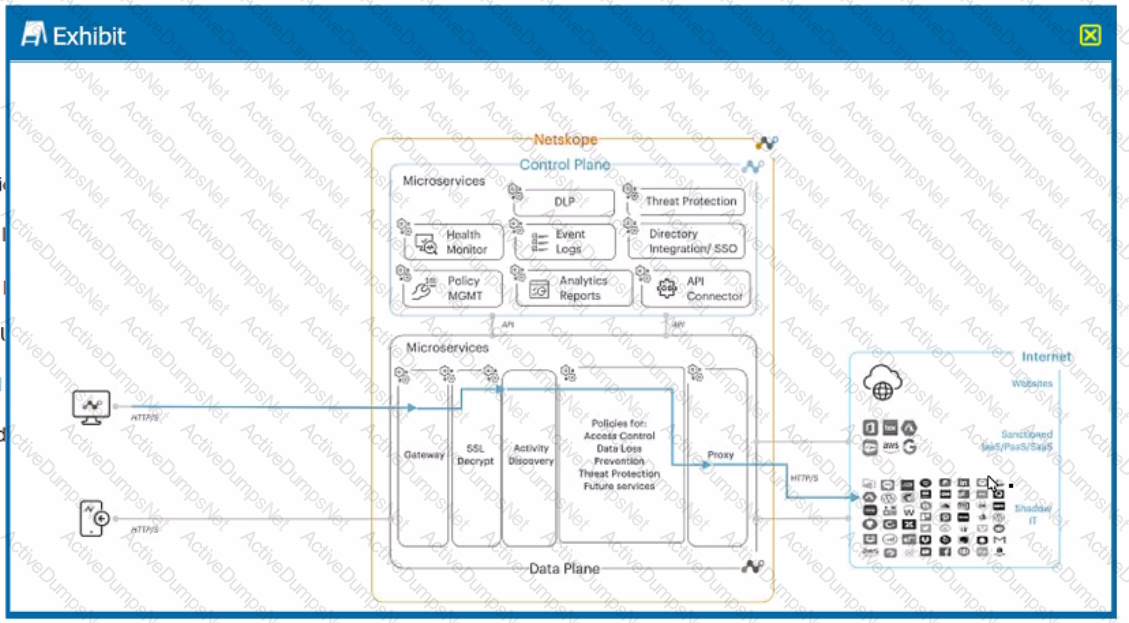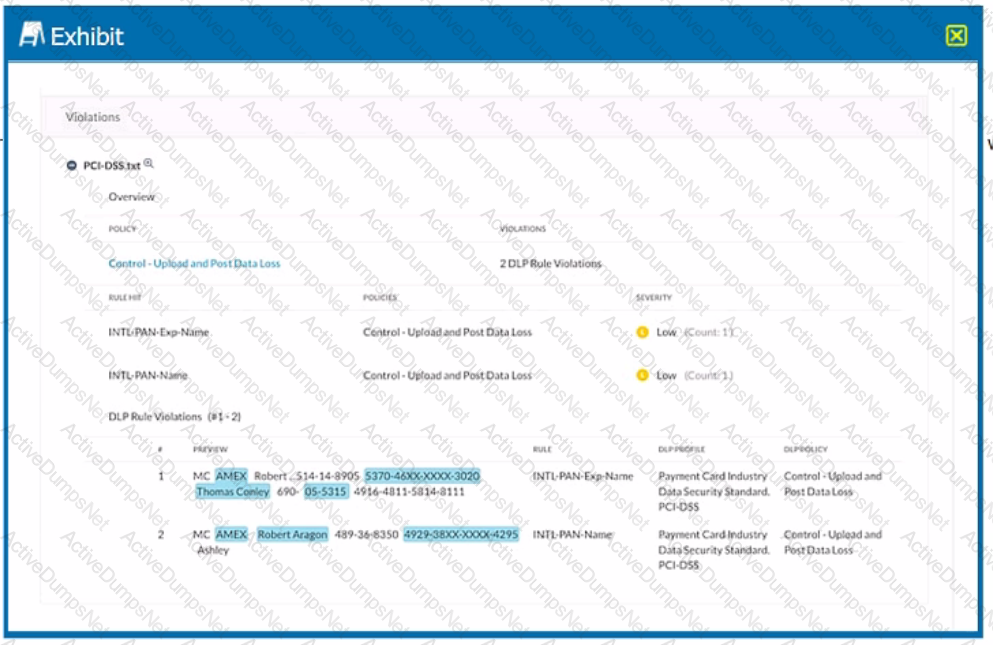Which statement is correct about Netskope's Instance Awareness?
Your company asks you to obtain a detailed list of all events from the last 24 hours for a specific user. In this scenario, what are two methods to accomplish this task? (Choose two.)
You investigate a suspected malware incident and confirm that it was a false alarm.
You just deployed the Netskope client in Web mode and several users mention that their messenger application is no longer working. Although you have a specific real-time policy that allows this application, upon further investigation you discover that it is using proprietary encryption. You need to permit access to all the users and maintain some visibility.
In this scenario, which configuration change would accomplish this task?
You want to set up a Netskope API connection to Box.
What two actions must be completed to enable this connection? (Choose two.)
Click the Exhibit button.

A customer has created a CASB API-enabled Protection policy to detect files containing sensitive data that are shared outside of their organization.
Referring to the exhibit, which statement is correct?
As an administrator, you are asked to monitor the status of your IPsec and GRE tunnels.
In the Netskope Admin UI, which two sections would you use in this scenario? (Choose two.)
Click the Exhibit button.
Referring to the exhibit, which statement accurately describes the difference between Source IP (Egress) and Source IP (User) address?
You need to block all users from uploading data files into risky collaboration applications. Which element must you configure within Netskope's CASB to accomplish this task?
Which three statements are correct about Netskope's NewEdge Security Cloud Network Infrastructure? (Choose three.)
You need to create a service request ticket for a client-related issue using the Netskope client Ul. In this scenario, you generate the client logs by right-clicking on the system tray icon and choosing
Which two functions are available for both inline and API protection? (Choose two.)
You are working with traffic from applications with pinned certificates. In this scenario, which statement is correct?
What is the limitation of using a legacy proxy compared to Netskope's solution?
You are required to present a view of all upload activities completed by users tunneled from the Los Angeles office to cloud storage applications.
Which two basic filters would you use on the SkopeIT Applications page to satisfy this requirement? (Choose two.)
When would an administrator need to use a tombstone file?
Exhibit

A user is connected to a cloud application through Netskope's proxy.
In this scenario, what information is available at Skope IT? (Choose three.)
Click the Exhibit button.

What are two use cases where the parameter shown in the exhibit is required? (Choose two.)
When accessing an encrypted website (HTTPS), what is a reason why you might receive a "certificate not trusted" browser message?
You want to take into account some recent adjustments to CCI scoring that were made in your Netskope tenant.
In this scenario, which two CCI aspects in the Ul would be used in a real-time protection policy? (Choose two.)
You want to see the actual data that caused the policy violation within a DLP Incident view.
In this scenario, which profile must be set up?
Your organization has recently implemented Netskope Private Access. During an investigation, your security team has asked you to provide a list of all hosts including domains and IP addresses that a user accessed through Netskope Private Access for the past seven days.
Which two locations in the Netskope Web UI would allow you to obtain and export the requested data? (Choose two.)
In which two scenarios would you use SD-WAN technology? (Choose two.)
What correctly defines the Zero Trust security model?
Which two common security frameworks are used today to assess and validate a vendor's security practices? (Choose two.)
The Netskope deployment for your organization is deployed in CASB-only mode. You want to view dropbox.com traffic but do not see it when using SkopeIT.
In this scenario, what are two reasons for this problem? (Choose two.)
Exhibit

Which portion of the interface shown in the exhibit allows an administrator to set severity, assign ownership, track progress, and perform forensic analysis with excerpts of violating content?
In which scenario would you use a SAML reverse proxy?
Which two use cases would be considered examples of Shadow IT within an organization? (Choose two.)